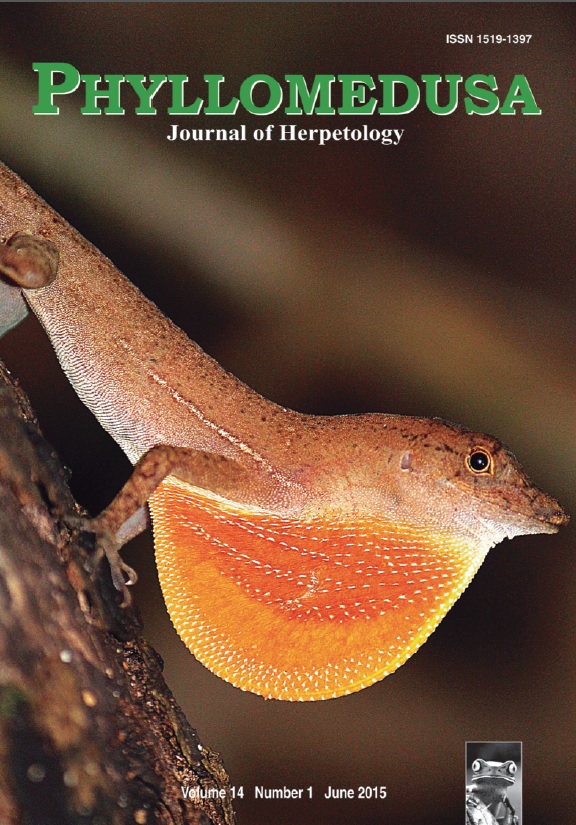Diet of larval Ambystoma rivulare (Caudata: Ambystomatidae), a threatened salamander from the Volcán Nevado de Toluca, Mexico
DOI:
https://doi.org/10.11606/issn.2316-9079.v14i1p33-41Keywords:
empty stomachs, nematodes, ostracods, stomach contents.Abstract
Several species of salamander in the genus Ambystoma occur in the mountains surrounding Mexico City and are considered at risk of extinction. However, little is known about their ecology and natural history. The Toluca Stream Siredon (Ambystoma rivulare) is classified as “Data Deficient” by the IUCN, and considered “Threatened” under Mexican law. From October 2013 to September 2014, we examined the diet of larval A. rivulare from a stream on the Volcán Nevado de Toluca in Mexico to provide insight into the suitability of the habitat to support this population of salamanders. Ostracods accounted for approximately 90% of all prey items consumed by larval A. rivulare. The number of ostracods found in stomachs increased with individual body size, but the proportion of ostracods in stomachs did not vary with body size. Nematodes were observed in approximately one third of the stomachs we examined. The diversity of prey in the diet of A. rivulare in the stream we studied is low and dominated by a single prey taxon, ostracods. Our results suggest that if environmental conditions in the stream change such that ostracods are negatively affected then the long-term persistence of this population of A. rivulare might be in jeopardy.Downloads
Download data is not yet available.
Downloads
Published
2015-06-30
Issue
Section
Articles
License
All material originally published in Phyllomedusa belongs to Escola Superior de Agricultura Luiz de Queiroz - Universidade de São Paulo. All contents are under a license of Creative Commons BY-NC-ND.How to Cite
Lemos-Espinal, J. A., Smith, G. R., Woolrich-Piña, G. A., & Montoya-Ayala, R. (2015). Diet of larval Ambystoma rivulare (Caudata: Ambystomatidae), a threatened salamander from the Volcán Nevado de Toluca, Mexico. Phyllomedusa: Journal of Herpetology, 14(1), 33-41. https://doi.org/10.11606/issn.2316-9079.v14i1p33-41



 Impact Factor (JCR): 0.600
Impact Factor (JCR): 0.600 CiteScore: 1.0
CiteScore: 1.0